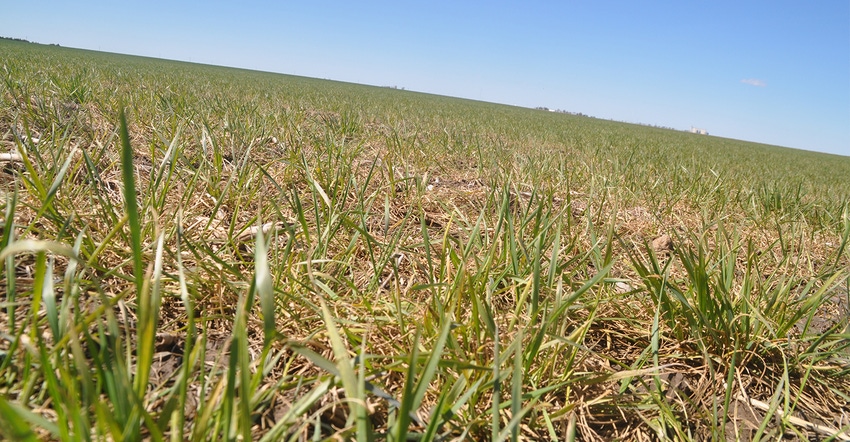
Wheat streak mosaic virus took a big bite out of the 2017 Kansas wheat harvest.
It is important for growers to know that this didn’t have to happen. This disease is preventable with good management practices that include the destruction of volunteer wheat prior to planting the fall crop.
Unfortunately for many producers, it is not their negligence, but that of their neighbors, that causes catastrophic losses to the pathogen. Here are six things you need to know about the virus.
1. There is no chemical remedy to control wheat curl mites. Wheat curl mites are not insects and cannot be controlled by insecticides. Any salesman who tells you there is a spray you can buy to protect your fields is leading you astray. There are miticide sprays that could be effective if sprayed directly on the mites but that is virtually impossible because the feeding pattern of the bugs protects them. They feed on lower canopy leaves, and their damage causes those leaves to curl, providing them with a protective umbrella.
2. There are no seed treatments that protect your crop. You can have fungicide and insecticide protection with treated seed. But no seed treatment protects your crop against the curl mite or the virus it vectors. Eliminating the mite before planting time is the only real protection.
3. There is no treatment for wheat streak mosaic virus. Once your field is infected, the infection cannot be stopped. The mites that spread the virus move on the wind, and it is almost impossible to stop them from spreading once they infest a field. The damage already done cannot be reversed.
4. Controlling volunteer wheat after harvest to destroy the “green bridge” that feeds the mites until the fall-planted wheat emerges is the only effective control. The wheat curl mite feeds on a few other crops, but it prefers wheat and cannot survive in large numbers on anything else. The only way to prevent a fall infestation is to kill summer volunteer after harvest. It is advisable to delay fall planting until after the Hessian fly-free date for your location and to spray fields with volunteer wheat several weeks before planting.
5. It takes two to three weeks of “totally dead” volunteer wheat to ensure that mites are eliminated. If you control volunteer wheat at least two to three weeks ahead of planting the fall crop, you can be sure that the mites will die of starvation and not be able to infect the new crop.
6. There are varieties that have resistance to wheat streak mosaic virus. However, the resistance mechanism is temperature-sensitive and tends to break down in warm temperatures. Varieties that are moderately resistant can still become infected if pressure is heavy, and the resistance is to wheat streak mosaic virus only. Plants can still be infected with High Plains virus and triticum mosaic virus, which are also vectored by the wheat curl mite. Researchers and wheat breeders are working to identify more resistance genes, but work to add them to varieties is years away.
About the Author(s)
You May Also Like




